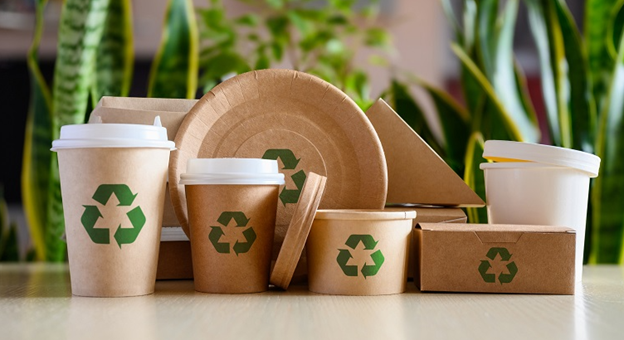Sustainability Unwrapped: How Green Packaging is Reshaping the Future of Products

In an era where environmental consciousness is at the forefront of consumer concerns, industries are pivoting towards more sustainable practices. One such area of significant transformation is packaging. Traditional packaging methods have long been associated with excessive waste and environmental degradation. However, the emergence of green packaging is revolutionizing the way products are packaged and delivered, offering a glimmer of hope in the fight against climate change and resource depletion.
The Rise of Green Packaging
Packaging, also known as sustainable packaging, refers to the use of eco-friendly materials and practices in the design, production, and disposal of packaging materials. This includes biodegradable, compostable, recyclable, and renewable resources that minimize environmental impact throughout the product’s lifecycle. The concept of packaging has gained momentum in recent years due to growing concerns over plastic pollution, deforestation, and carbon emissions.
Environmental Benefits of Green Packaging
One of the primary advantages of packaging is its reduced environmental footprint compared to conventional packaging methods. By utilizing renewable resources and minimizing waste generation, packaging helps mitigate the adverse effects of packaging on ecosystems and natural resources. For instance, materials such as recycled paper, cardboard, and bioplastics require fewer fossil fuels and energy-intensive processes to produce, resulting in lower greenhouse gas emissions and pollution levels.
Moreover, packaging promotes circularity by encouraging recycling and composting, thus diverting materials from landfills and incinerators. This not only conserves valuable resources but also reduces the release of harmful chemicals and greenhouse gases associated with waste decomposition. Additionally, certain types of packaging, such as biodegradable plastics derived from plant-based sources like cornstarch, offer a viable alternative to traditional plastics, which can persist in the environment for hundreds of years.
Technological Innovations Driving Green Packaging
Advancements in technology have played a pivotal role in driving the development of packaging solutions. From innovative materials to sustainable manufacturing processes, technology has enabled companies to create packaging that is both environmentally friendly and functional. For example, bio-based polymers derived from agricultural by-products and algae offer a renewable alternative to petroleum-based plastics, reducing reliance on non-renewable resources and lowering carbon emissions.
Furthermore, advances in recycling and waste management technologies have made it easier to recover and repurpose packaging materials, closing the loop on the packaging lifecycle. With the advent of intelligent packaging systems equipped with sensors and RFID tags, companies can track products throughout the supply chain, minimizing losses and optimizing resource utilization. These technologies not only enhance the sustainability of packaging but also improve efficiency and transparency in the production and distribution processes.
Consumer Demand for Sustainable Packaging
Consumer preferences play a crucial role in driving the adoption of green packaging by companies. As awareness of environmental issues grows, consumers are increasingly seeking products packaged in eco-friendly materials and are willing to support brands that prioritize sustainability. Surveys have shown that a significant percentage of consumers are willing to pay a premium for products packaged in environmentally friendly materials, reflecting a shift towards more conscientious consumption habits.
Moreover, the rise of social media and online platforms has empowered consumers to advocate for sustainable practices and hold companies accountable for their environmental impact. Brands that fail to embrace sustainable packaging risk facing backlash and damage to their reputation, highlighting the importance of aligning with consumer values and expectations. As a result, many companies are incorporating sustainability into their packaging strategies as part of broader corporate responsibility initiatives.
Challenges and Opportunities Ahead
While the adoption of packaging holds immense promise for reducing environmental harm, it is not without its challenges. One of the main obstacles is the cost associated with transitioning to sustainable materials and processes, which can be higher than traditional alternatives. However, as demand for packaging continues to rise and economies of scale are achieved, prices are expected to become more competitive, making sustainability more accessible to businesses of all sizes.
Another challenge lies in the complexity of the global supply chain, which often involves multiple stakeholders and logistical hurdles. Achieving widespread adoption of packaging requires collaboration across industries, governments, and consumers to overcome barriers and drive systemic change. Additionally, innovations in recycling infrastructure and waste management will be essential to maximize the recovery and reuse of packaging materials, closing the loop on the circular economy.
Despite these challenges, the transition to packaging presents numerous opportunities for innovation and growth. Companies that embrace sustainability stand to gain a competitive advantage by differentiating themselves in the market and appealing to environmentally conscious consumers. Moreover, investments in research and development of new materials and technologies can lead to breakthroughs that further enhance the sustainability and performance of packaging solutions.
Conclusion
Green packaging represents a paradigm shift in the way products are packaged and consumed, offering a sustainable alternative to traditional packaging methods. By leveraging eco-friendly materials, innovative technologies, and consumer-driven demand, companies can reduce their environmental impact and contribute to a more sustainable future. While challenges remain, the momentum towards packaging signals a promising transformation in the way we package and deliver goods, reshaping the future of products for generations to come.

